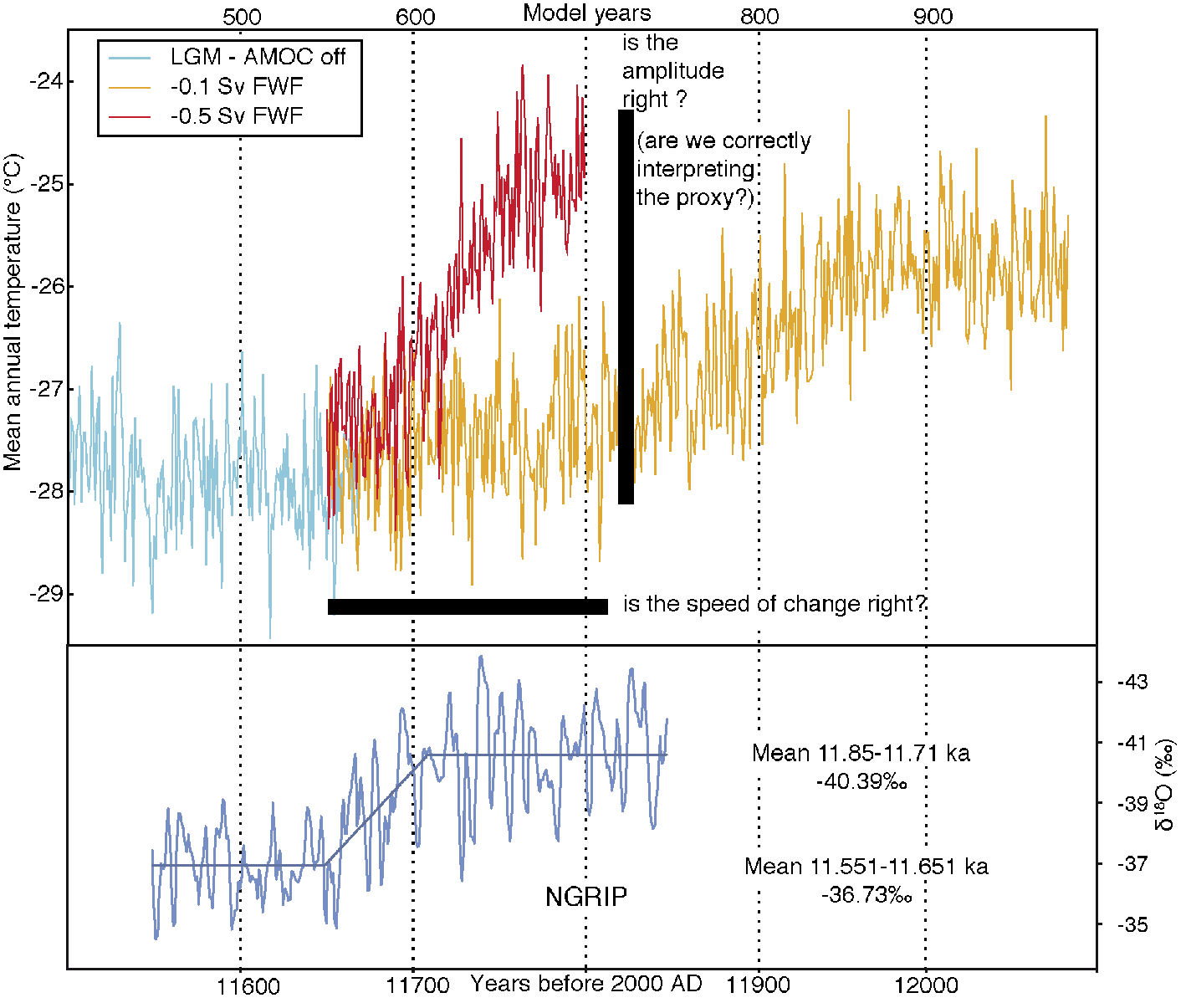- Home
- Publications
- PAGES Magazine
- Earth System Models - How Well Do Earth System Models Simulate The Dynamics of Global Change? [Past]
Earth system models - How well do Earth system models simulate the dynamics of global change? [Past]
Masa Kageyama
PAGES news
20(1)
9
2012
Masa Kageyama
Laboratoire des Sciences du Climat et de l'Environnement, CEA Saclay, Gif-sur-Yvette, France; Masa.Kageyama lsce.ipsl.fr
lsce.ipsl.fr
Climate models, in particular the “big” general circulation models used for climate prediction, are first evaluated in comparison to present climate. This step is crucial, but does not warrant a correct sensitivity to external forcings or a realistic representation of the speed of climatic changes under time-dependent forcings. As underlined by Tim Lenton (this issue), it is unreasonable to just wait and see if the climate changes predicted by the current models have actually happened. But we can turn to the past and to the numerous paleo-records.
What do they tell us? That it is impossible to find a close analogue to the recent and probably future climate change in the paleo-record, in terms of forcing and in terms of the speed at which it occurs. But there are periods warmer than present and there are periods of abrupt climate changes. These past scenarios provide an endless list of challenges for climate – and more generally Earth System – modelers. The challenges fall into three categories. Are we able to model (and thus prove we understand) (1) the direction, (2) the amplitude and (3) the speed of the reconstructed climate changes?
For a long time, general circulation models have only been used to tackle the first two tasks, by considering simulations at equilibrium with external forcings and boundary conditions different from today. The Palaeoclimate Modelling Intercomparison Project (Braconnot et al. 2007) has led such comparisons for the Mid-Holocene (MH) and the Last Glacial Maximum (LGM). Very often, the models have proved to be able to simulate the sign of the reconstructed climate differences, but not their amplitude, e.g. in African monsoon amplification during the Holocene or for the European or Greenland cooling during the LGM. Does this prove the models have a too low sensitivity? Maybe, and there are many processes (e.g. vegetation, ice-sheets) that models do not account for yet. Their inclusion could increase model sensitivity to external forcing, at least regionally. On the other hand, we have to remember that the paleo-climatic reconstructions are also based on assumptions and associated with uncertainties. Direct (“forward”) modeling of the paleo-climate indicators such as vegetation, oxygen isotopes or abundance of foraminifera offers a solution by accounting for multiple factors controlling the environmental indicators. Forward modeling has shown that formerly neglected processes needed to be considered in the interpretation of a record and that this can result in more satisfactory model-data comparisons than those between modeled and reconstructed climate variables (e.g. LeGrande et al. 2006).
This is only a first step. As questions on the speed of future climate change and our ability to adapt to them arise, we can return to the paleo-record. On which timescales can climatic change occur? Our knowledge on this topic has greatly increased since a few decades ago, when climate history was considered to occur on tectonic and Milankovitch (ice age) time-scales only. The discovery of abrupt climate changes in Greenland and elsewhere during the last glacial cycle has raised the challenge to understand changes that occurred over a few decades or even just a few years (Steffensen et al. 2009), much shorter than the time-scale at which the external forcings evolved (Fig. 1).
These short time-scales imply that “big” models can now be used to test our understanding of these fast climate changes, in addition to Earth System Models of Intermediate Complexity (EMICS). EMICS have the advantage of running fast and include representations of the slow components of the climate system. As such, they have been used extensively to study climate evolution, but the origin of the abrupt Dansgaard-Oeschger warmings is still elusive. So far, no model, neither EMIC nor GCM, has been able to simulate such transitions without imposing ad-hoc fresh water flux forcings. Are our models too simple? Are there missing processes in our understanding? Do we overinterpret the proxies? Are the very fast climatic shifts recorded in Greenland the result of a large change in interannual variability superimposed on a slower climate evolution? On this topic, big models, equipped with “proxy simulators” might bring new enlightening perspectives.
references
Full reference list online under: http://pastglobalchanges.org/products/newsletters/ref2012_1.pdf
Braconnot et al. (2007) Climate of the Past 3: 261-277
